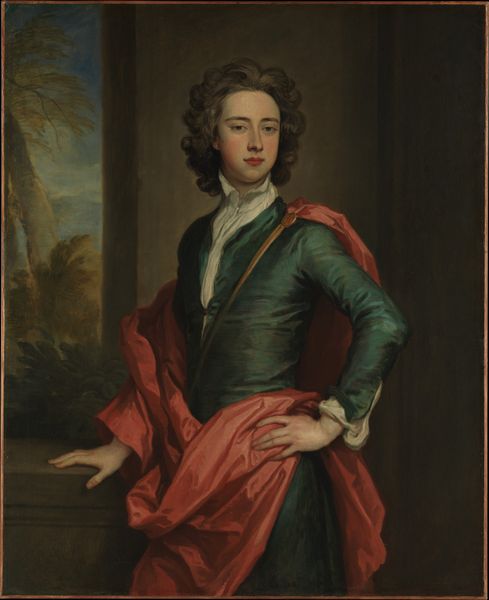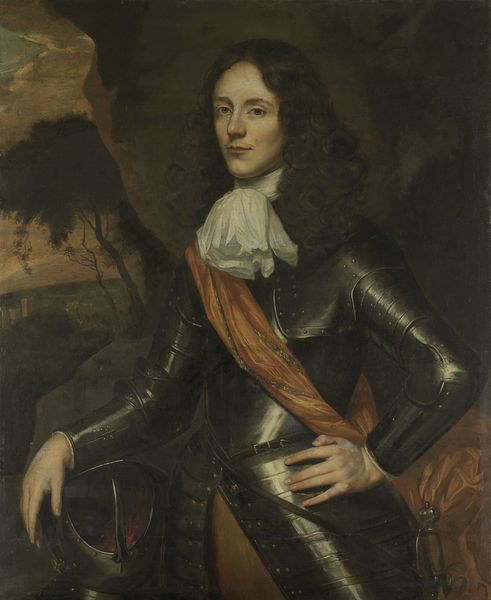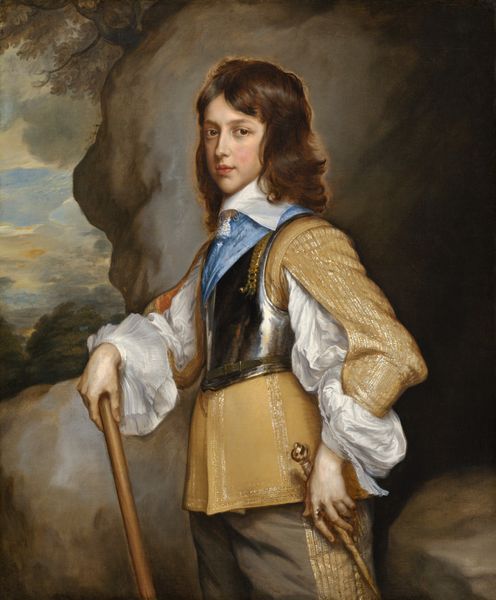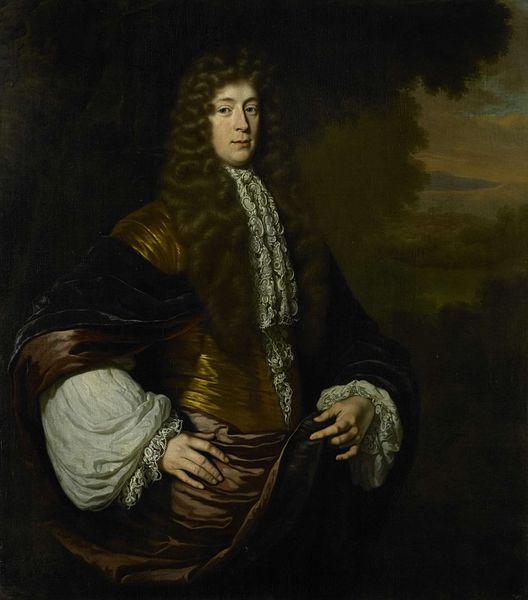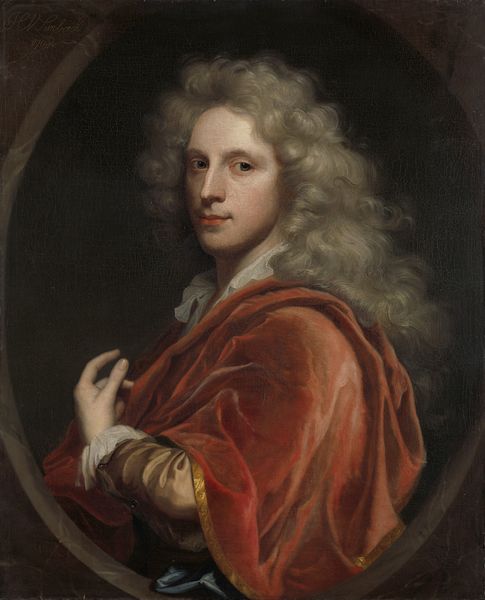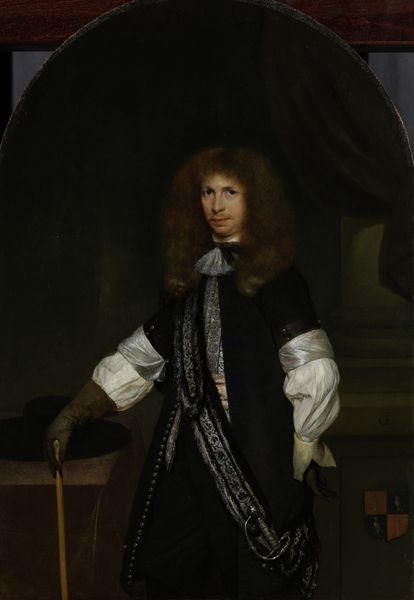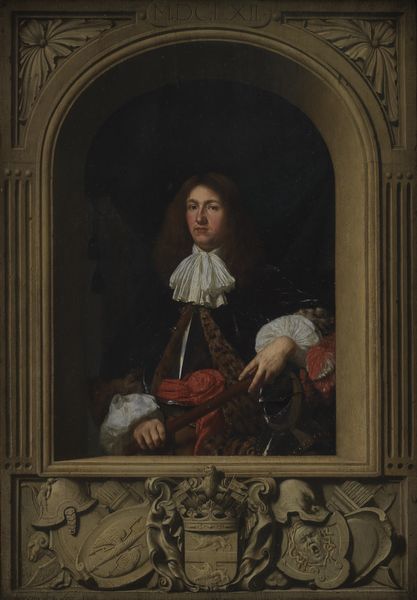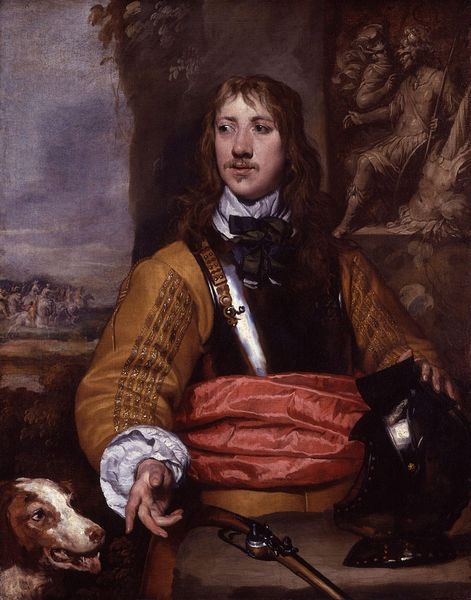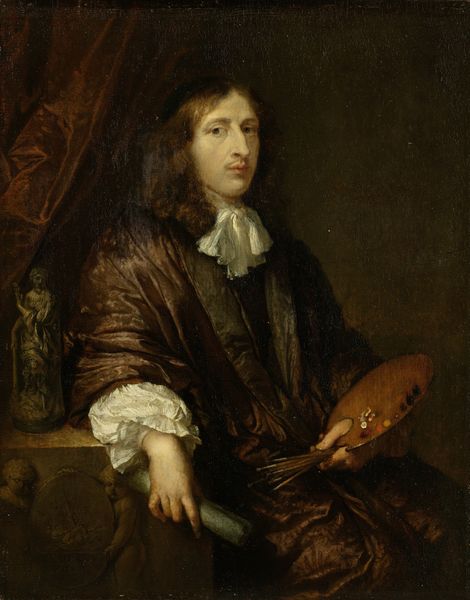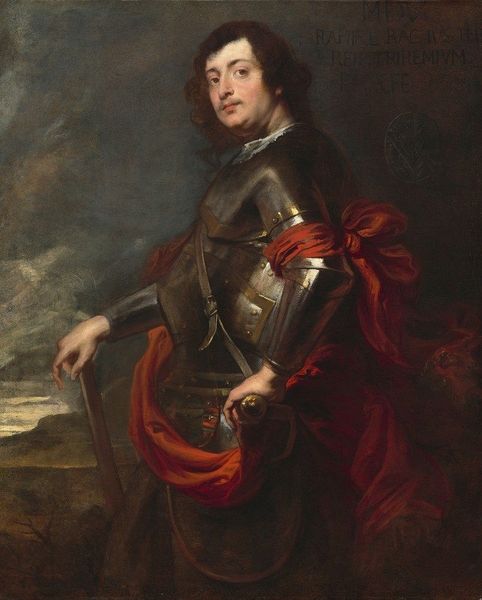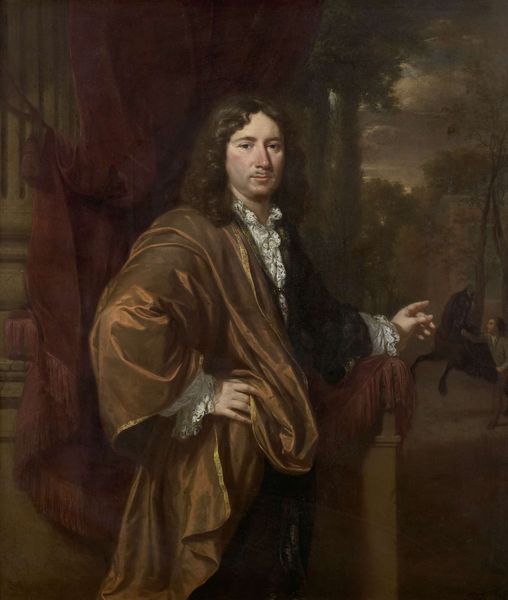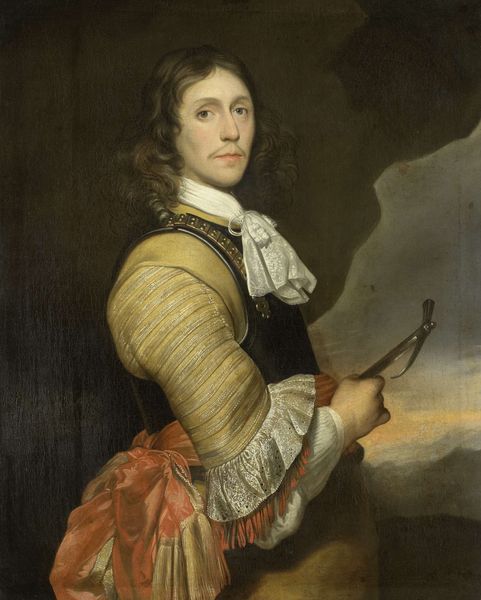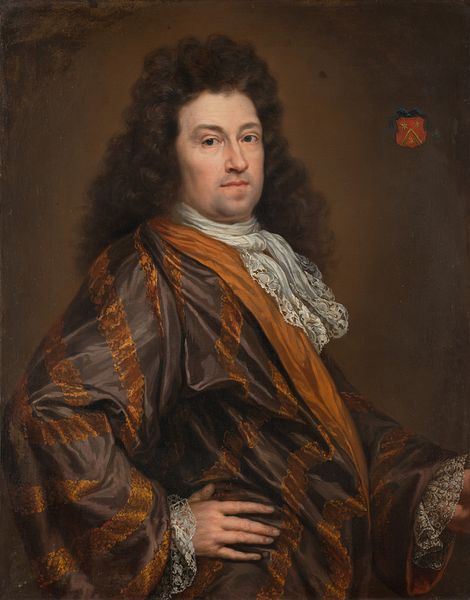
Portrait of Rupert (1619-1682), Prince-Palatine of the Rhine, in Combat Dress after 1645
0:00
0:00
anthonyvandyck
Rijksmuseum
Dimensions: support height 127.5 cm, support width 102.3 cm, outer size depth 8 cm
Copyright: Rijks Museum: Open Domain
Editor: Here we have Anthony van Dyck's portrait of Rupert, Prince-Palatine of the Rhine, painted after 1645. The Prince is in combat dress, but there's a softness to the portrayal; a romanticism even amidst the suggestion of conflict. What strikes you about this image? Curator: What immediately comes to mind is the complex role portraiture played in constructing power and identity in the 17th century. Van Dyck, as a court painter, was essentially creating propaganda. How does depicting Rupert in 'combat dress' – yet with a soft, almost vulnerable expression – serve the political aims of the monarchy at the time? Editor: So it's about image management and presentation, then? Less about raw power and more about subtly projecting an idea of leadership? Curator: Precisely. Consider the socio-political turmoil of the English Civil War, where Rupert was a prominent Royalist commander. Van Dyck’s painting presents him not as a brutal warrior, but as a noble, perhaps even reluctant, participant in the conflict. He's presented as dutiful rather than bloodthirsty, which speaks to the Royalist's need to legitimize their cause to a wider public. Editor: That makes me reconsider the context I initially brought: "romanticism." Is it fair to still frame the image this way, knowing this intention? Curator: It’s important to consider it critically. "Romanticism" in art, later on, emphasized individual emotion and heroism. Van Dyck anticipates that style, but his purpose is fundamentally different. The soft portrayal is a tool for constructing a specific public image of Rupert, designed for political consumption. Are the aesthetic qualities subverted for a pragmatic outcome? Editor: I see. So, while the portrait is beautiful and evokes certain emotions, understanding its historical and political context reveals a deeper, more strategic intention. I learned something here. Thanks! Curator: And I was forced to reconsider my hard edges. It seems even historians must allow beauty and function to sometimes exist at once. Thank you!
Comments
No comments
Be the first to comment and join the conversation on the ultimate creative platform.
